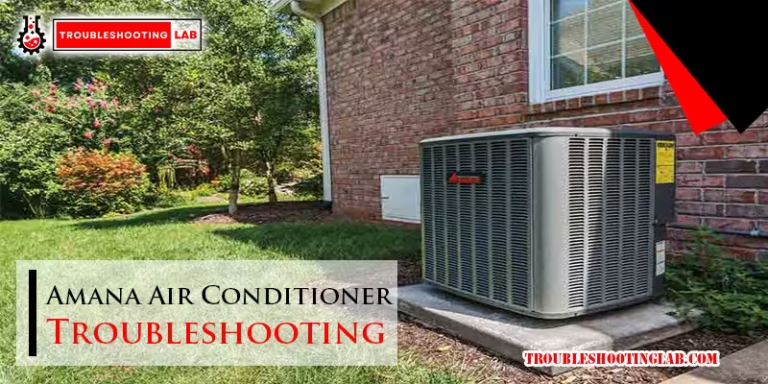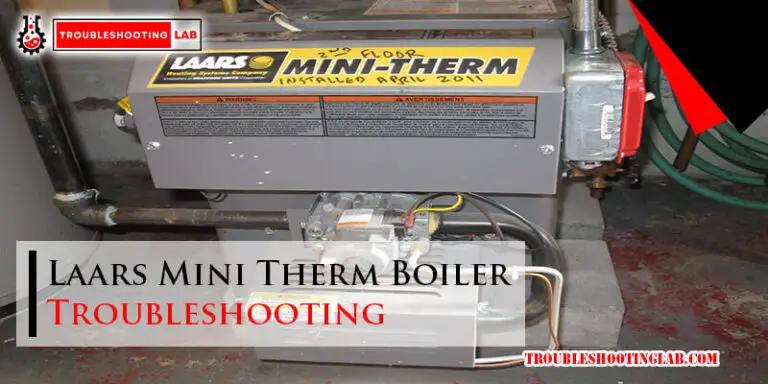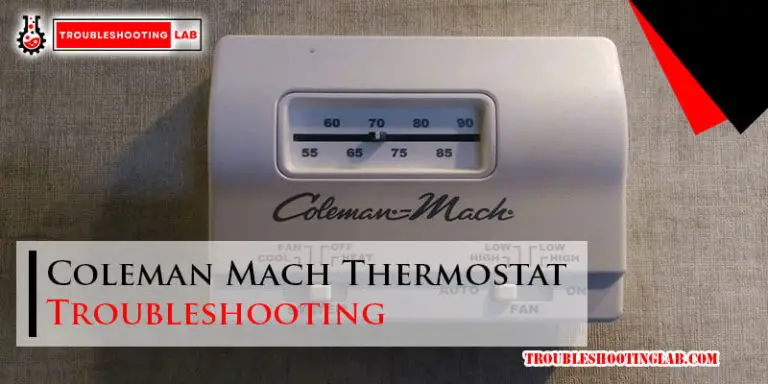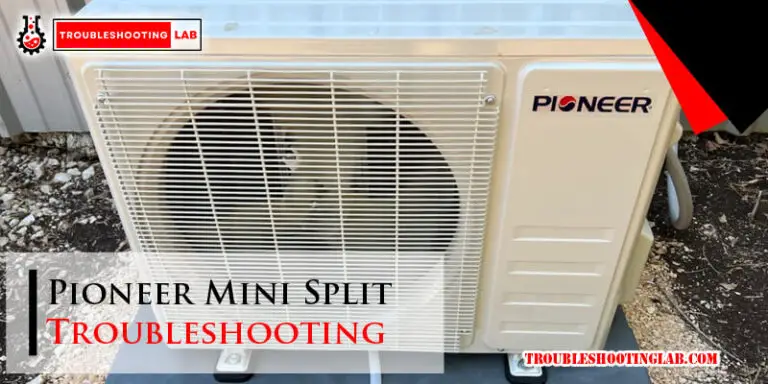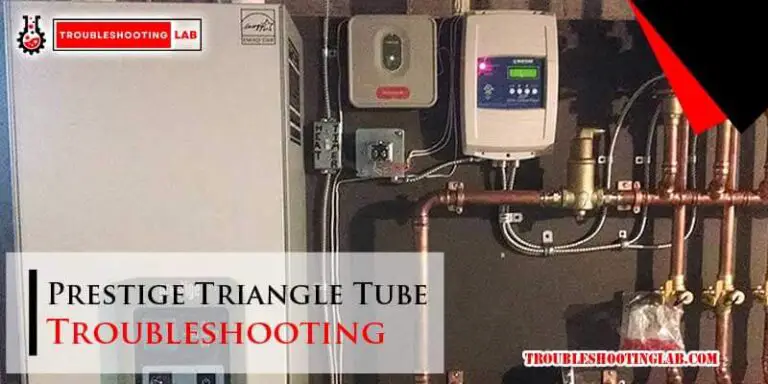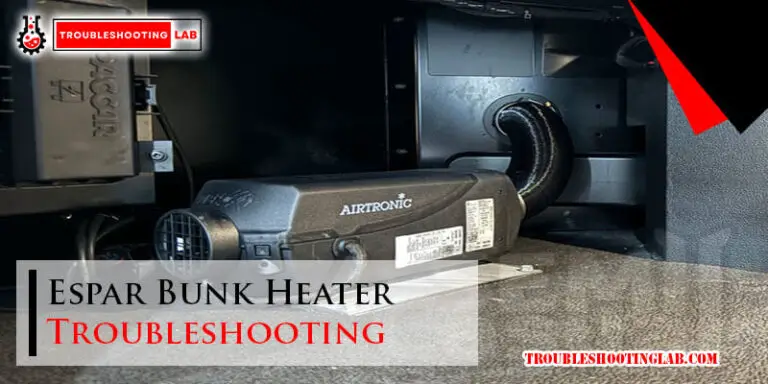Carlin Oil Burner Troubleshooting: Quick Fixes Guide
If your Carlin oil burner isn’t working as it should, you’re not alone. When your heating system acts up, it can leave you frustrated—and cold.
But here’s the good news: most issues with oil burners can be pinpointed and fixed without calling in a professional. That’s right, with a little guidance, you can troubleshoot your burner and save time, money, and stress. In this post, we’ll walk you through the common problems Carlin oil burners face and how to fix them step by step.
Whether your burner won’t start, keeps shutting off, or just isn’t heating efficiently, we’ve got you covered. By the end of this guide, you’ll feel confident tackling the problem and getting your system back on track. Ready to take control of your heating system? Let’s dive in!

Credit: carlincombustion.com
Common Issues With Carlin Oil Burners
Carlin oil burners are reliable and efficient, but like any other equipment, they can run into issues over time. When your burner isn’t working as it should, it’s frustrating—especially during the colder months. The good news is, most common problems are fixable without requiring advanced technical skills.
1. Burner Fails To Ignite
If your burner doesn’t ignite, check the obvious first: Is there oil in the tank? It sounds basic, but it’s often overlooked. A clogged nozzle or a dirty filter can also stop the burner from firing.
Another culprit might be the electrodes. These small components produce the spark to ignite the oil. If they’re misaligned or dirty, the ignition process won’t work. Cleaning or adjusting them can often solve the problem.
2. Burner Runs But Produces Smoke
Black smoke coming from your burner is a warning sign. It usually means incomplete combustion. This can happen when the air-to-fuel ratio is off or if the nozzle is the wrong size.
Check the burner’s air settings and ensure proper ventilation. If you’ve recently replaced the nozzle, verify it matches your burner’s specifications. Too much oil or too little air can quickly create a smoky mess.
3. Strange Noises During Operation
Grinding, buzzing, or rumbling noises aren’t normal. These sounds often point to a problem with the blower motor or the fuel pump. For instance, a buzzing sound could mean the motor is struggling to start.
Sometimes, the issue is as simple as loose components. Tighten screws and connections before assuming the worst. If the noises persist, it might be time to call in a professional.
4. Burner Shuts Off Unexpectedly
If your burner starts and then shuts off, it could be a safety feature kicking in. The flame sensor might not be detecting the flame properly. Cleaning the sensor often resolves this issue.
Thermostat problems can also cause the burner to cycle incorrectly. Double-check the thermostat settings and wiring to ensure they’re functioning as intended. Don’t overlook the possibility of a dirty oil filter causing inconsistent oil flow.
5. Poor Heating Performance
Your burner may run, but your home still feels cold. A clogged fuel line or nozzle could be restricting oil flow. Similarly, dirty air filters may reduce airflow, decreasing heating efficiency.
Regular maintenance like cleaning or replacing filters can improve performance. If you’re still not getting enough heat, you may need to recalibrate the burner’s settings. Always refer to the user manual for guidance.
When was the last time you serviced your Carlin oil burner? Regular upkeep can prevent many of these issues from occurring in the first place. Don’t wait for a breakdown—your comfort depends on it.
Signs Of Burner Malfunction
Your Carlin oil burner plays a vital role in keeping your home warm and comfortable, especially during colder months. But what happens when it starts acting up? Recognizing the signs of burner malfunction early can save you time, money, and stress. Let’s dive into the warning signs so you can address issues before they escalate.
Unusual Noises
Does your oil burner sound louder than usual? Pay attention to banging, rumbling, or high-pitched squeals. These noises often signal mechanical issues like loose components or a failing motor.
A friend once told me their burner sounded like a small jackhammer. Turns out, the fan assembly was damaged. Catching it early prevented further damage. Have you noticed similar sounds? If yes, it’s time to investigate.
Burner Fails To Start
A burner that refuses to start is frustrating—and cold winters make it worse. This issue could stem from a clogged nozzle, faulty ignition system, or lack of fuel. Check your fuel levels first; it’s often the simplest fix.
If the problem persists, inspect the burner’s wiring or control system. A homeowner once shared how resetting the burner solved their issue. Could a quick reset be the answer for you?
Soot Or Smoke Emission
Noticing soot buildup or smoke coming out of your burner? This is never a good sign. Excess soot can mean incomplete combustion, often caused by improper air-to-fuel mixture or a dirty nozzle.
Smoke, on the other hand, could indicate blocked airflow or a malfunctioning flue pipe. Ignoring these signs can lead to carbon monoxide risks. Have you checked your burner’s vents recently?
Addressing these signs promptly can prevent bigger problems down the line. Your safety and comfort matter, so don’t overlook these red flags. What steps will you take next to ensure your oil burner runs smoothly?
Steps To Check Power Supply
When your Carlin oil burner isn’t working as it should, one of the first things to check is the power supply. A lack of power can be the simplest issue to fix, yet it’s often overlooked. By following a few straightforward steps, you can quickly determine if the power supply is the culprit and save yourself from unnecessary headaches—or a cold night.
Inspecting Circuit Breakers
Head to your home’s main electrical panel and locate the circuit breaker labeled for your heating system. Check if it’s in the “off” position or has tripped to the middle. A tripped breaker is a sign that too much power was drawn, possibly by the burner itself.
Reset the breaker by flipping it completely off and then back to “on.” If it trips again immediately, there may be an electrical issue that requires professional help. Don’t keep resetting it, as this could cause further damage.
Testing The Thermostat
Ensure your thermostat is set to “heat” and the temperature is higher than the current room temperature. Sometimes, a misaligned setting can make it seem like the burner isn’t getting power. Adjust the thermostat to a higher setting and listen for a click or hum, which indicates it’s sending a signal to the burner.
If you don’t hear anything, replace the thermostat batteries. Low battery power can disrupt signals to the burner. If changing the batteries doesn’t help, you might need to test the thermostat with a multimeter.
Verifying Electrical Connections
Locate the electrical connections to the burner and make sure they’re secure. Loose or corroded wires can interrupt the power supply and stop the burner from functioning. Tug gently on the connections to confirm they’re firmly in place.
Check for visible signs of wear, like frayed wires or scorch marks. If you see damage, turn off the power immediately and call a licensed technician. It’s not worth risking your safety by attempting DIY repairs on electrical components.
By systematically inspecting the circuit breakers, thermostat, and electrical connections, you can often pinpoint power-related issues without needing advanced technical skills. What’s the first thing you’re going to check? Start simple—it could save you a service call.

Credit: www.youtube.com
Fuel Supply Troubleshooting
Keeping your Carlin oil burner running smoothly starts with ensuring the fuel supply is in top shape. A problem with fuel delivery can leave your burner struggling to ignite or maintain a steady flame. Let’s walk through some simple yet critical steps to troubleshoot fuel supply issues effectively.
Checking Oil Levels
Low oil levels are one of the most common culprits behind burner issues. Always check the oil tank gauge before diving into other troubleshooting steps. If the gauge shows low oil, call your supplier to refill the tank immediately.
Sometimes, the gauge might stick or give inaccurate readings. Use a dipstick to confirm the actual oil level if you’re unsure. Regular monitoring of your oil levels can save you from unexpected outages.
Cleaning Or Replacing The Filter
Over time, your oil filter can get clogged with dirt and sludge, restricting fuel flow. A clogged filter can cause your burner to sputter or fail to ignite altogether. If you haven’t cleaned or replaced the filter recently, this could be the issue.
Turn off the burner before working on the filter. Remove the filter housing, inspect the filter, and clean it with kerosene if it’s reusable. If it looks too worn out, replace it with a new one—your burner will thank you.
Inspecting Fuel Lines For Leaks
Leaky fuel lines can lead to air entering the system, disrupting the steady flow of oil. Inspect the fuel lines from the tank to the burner carefully. Look for any cracks, loose fittings, or oil stains along the lines.
If you spot a leak, tighten loose connections or replace damaged sections immediately. Ignoring leaks can not only affect burner performance but also pose a safety hazard. Always test the system after addressing leaks to ensure the fuel is flowing properly.
Taking these steps can make a world of difference in resolving fuel supply issues. Have you checked your oil levels or inspected your fuel lines recently? These small tasks can prevent big headaches down the road.
Reset Button And Safety Controls
Oil burners, like the Carlin models, come with essential safety features to ensure smooth operation. The reset button and safety controls play a crucial role in preventing damage and ensuring your system runs efficiently. Understanding how these components work can save you time and costly repairs.
When To Use The Reset Button
The reset button acts as a safeguard. It shuts down the burner when something goes wrong, like a failed ignition or no flame detected. Pressing it gives the burner another chance to restart.
Use this button sparingly. If your burner doesn’t start after one or two presses, don’t keep pushing it. Repeated resets can flood the system with oil, leading to more serious issues.
Before pressing the reset button, ask yourself: why did it trip? Look for obvious causes, like a power outage or an empty oil tank. If the problem isn’t clear, check the safety controls next.
Checking The Primary Control
The primary control is the brain of the oil burner. It monitors the system and decides when to shut it down for safety. If your burner isn’t working, this is the first place to check.
Start by inspecting the wiring connections. Loose wires or corrosion can cause the control to malfunction. Tighten or clean them as needed.
If the control seems fine, observe its indicator lights. They often blink error codes, which can help you pinpoint the issue. Refer to your Carlin burner manual for a guide on decoding these signals.
Testing The Flame Sensor
The flame sensor ensures the burner operates only when there’s an active flame. If it doesn’t detect a flame, the system shuts down for safety. A dirty or faulty flame sensor can lead to nuisance trips.
To test the sensor, turn off the burner and remove it carefully. Check for soot or dirt buildup. Clean it gently with a soft cloth or fine sandpaper.
If cleaning doesn’t fix the issue, consider replacing the sensor. Make sure to buy a sensor compatible with your Carlin burner model. Always follow safety precautions during installation.
By understanding these components, you can troubleshoot your oil burner with confidence. Have you ever faced a situation where the reset button kept tripping? What steps did you take to resolve it? Share your experience below!
Airflow And Ventilation Fixes
Maintaining proper airflow and ventilation is critical for your Carlin oil burner to work efficiently. A lack of fresh air or poor ventilation can disrupt the combustion process, causing your burner to underperform or even shut down. Tackling these airflow issues doesn’t have to be overwhelming—simple checks and adjustments can make a big difference.
Clearing The Air Intake
The air intake is where your burner pulls in the oxygen it needs to function. If it’s clogged with dust, dirt, or debris, your burner may struggle to burn oil properly. Take a close look at the intake area and clean it thoroughly with a soft brush or vacuum.
Sometimes, the blockage isn’t external. If your burner is in a small, enclosed space, it may not have enough access to fresh air. In that case, consider adding a vent or leaving a door open to improve airflow. Have you checked if your burner is “breathing” freely?
Inspecting The Chimney Or Vent
A blocked chimney or vent can trap exhaust gases and disrupt the airflow. This can trigger safety mechanisms and shut your burner off. Use a flashlight to inspect the vent for soot, bird nests, or other obstructions.
If you notice buildup, clear it carefully using a chimney brush or call a professional for a thorough cleaning. Regular inspections—especially before winter—can save you from dealing with unexpected shutdowns. A clean vent not only ensures proper airflow but also keeps your home safer.
Adjusting The Burner Air Settings
Your Carlin oil burner has adjustable air settings that control the air-to-fuel ratio. If the air settings are too low, your burner may produce soot or smoke. If they’re too high, it could waste fuel and reduce efficiency.
Refer to your burner’s manual to locate the adjustment screw. Turn it slightly and observe the flame—steady, blue flames indicate optimal performance. If you’re unsure, consult a technician to fine-tune the settings. Have you tested this simple tweak before calling for costly repairs?
By addressing these airflow and ventilation issues, you can keep your Carlin oil burner running smoothly and extend its lifespan. Start with these small fixes before jumping to more complex troubleshooting steps.
Cleaning The Burner Components
Cleaning the burner components is a critical step in keeping your Carlin oil burner running efficiently and safely. Regular cleaning prevents buildup that can hinder performance and even lead to costly repairs. Let’s break down the cleaning process into manageable tasks to help you maintain your burner effectively.
Cleaning The Nozzle
The nozzle controls how oil sprays into the combustion chamber, so any clog or residue can disrupt proper functioning. Carefully detach the nozzle using a wrench and inspect it for debris or blockage. If you notice buildup, soak the nozzle in clean kerosene for a few minutes to loosen the grime.
Once soaked, gently scrub the nozzle with a soft-bristled brush to remove remaining residue. Avoid using sharp objects that could damage the nozzle opening. After cleaning, ensure the nozzle is completely dry before reattaching it to the burner.
Removing Soot From The Combustion Chamber
Soot buildup in the combustion chamber can reduce efficiency and increase emissions. Start by opening the chamber door and inspecting the walls for soot accumulation. Use a wire brush to scrape off the soot, working in small sections for thorough cleaning.
Consider using a shop vacuum to remove loose debris and prevent it from spreading. Be gentle with the chamber lining to avoid damage. Once the chamber is clean, close the door securely to maintain airtightness.
Maintaining The Electrodes
The electrodes are responsible for igniting the oil, making their maintenance essential. Begin by inspecting the electrodes for corrosion or wear. If you see buildup or discoloration, clean them with fine-grit sandpaper until they appear smooth and shiny.
Double-check the electrode gap using a feeler gauge to ensure proper spacing, as incorrect gaps can cause ignition issues. Adjust the electrodes carefully if needed, and replace them if they show signs of excessive wear or damage.
Have you ever skipped cleaning your burner components and faced unexpected problems? Regular maintenance can save you time and money while keeping your heating system reliable. Start small—clean one component today and notice the difference in performance.
When To Call A Professional
When your Carlin oil burner starts acting up, it’s tempting to fix the issue yourself. Basic troubleshooting can solve common problems, like resetting the burner or clearing blockages. But sometimes, you need to know when it’s time to call a professional. Ignoring serious issues can lead to costly repairs or even safety hazards. Let’s break down key signs that you shouldn’t ignore.
Persistent Issues After Troubleshooting
If you’ve tried all the basics—resetting the burner, cleaning the nozzle, or checking the fuel supply—and the problem persists, it’s time for expert help. A burner that repeatedly shuts off after starting could signal deeper issues like improper air-to-fuel ratios. These aren’t quick fixes.
Think about this: how much time are you spending trying to diagnose the problem? If you’ve already spent hours without results, a professional can save you frustration and ensure the burner runs efficiently. Don’t let a minor delay turn into a major inconvenience.
Signs Of Major Component Failure
Did you hear unusual noises like grinding or banging? That’s often a sign of component failure. A faulty motor or a cracked heat exchanger can affect your burner’s performance and safety. These repairs require specialized tools and expertise.
Another red flag is visible damage, like leaking oil or frayed wires. Ignoring these can lead to dangerous situations like a fire risk. If you notice any of these issues, shut off the burner immediately and make that call.
Annual Maintenance Recommendations
Even if your burner seems fine, annual maintenance is essential. A professional can inspect critical components, clean parts, and test efficiency. Regular service can prevent surprise breakdowns and extend your burner’s lifespan.
Ask yourself: When was the last time you scheduled maintenance? If it’s been over a year, you’re overdue. Maintenance visits often catch problems before they become expensive repairs. A small investment now can save you big bucks later.
Knowing when to call a professional isn’t just about fixing problems—it’s about protecting your investment and ensuring safety. Don’t wait for minor issues to turn into major headaches. Stay proactive and give your burner the care it deserves.

Credit: richardsmapleproducts.com
Conclusion
Regular maintenance keeps your Carlin oil burner running smoothly. Address issues early to avoid bigger problems. Clean filters and check fuel lines often. Listen for unusual sounds or smells during operation. Always follow safety guidelines while troubleshooting. If problems persist, consult a professional for assistance.
A well-maintained burner saves energy and extends its lifespan. Paying attention now can prevent costly repairs later. Keep your system in top shape for consistent performance. Your attention ensures warmth and comfort all year round.

